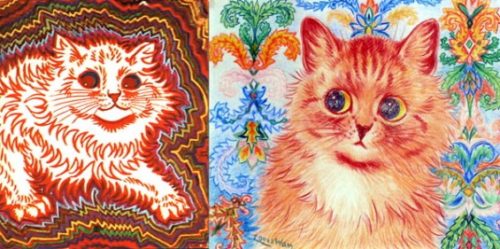
There are a tremendous number of misconceptions about schizophrenia – a combination of a cultural reluctance to confront the reality of mental illness and prior inaccurate portrayals in popular media. Avoiding these misconceptions and cliches is crucial to creating a believable and engaging schizophrenic character.
Perhaps the most glaring misconception is the belief that having schizophrenia means having multiple personality disorder. Many people still seem to believe that having schizophrenia is like Strange Case of Dr. Jekyll and Mr. Hyde, in which a powerfully suppressed evil nature sometimes breaks through to the surface and takes over the mind of the patient.
It’s certainly possible that a schizophrenic might have powerful struggles with inner demons, but they are not werewolves. A psychopathic alter ego is more characteristic of the psychopath. Powerful mood swings might make the schizophrenic seem like different people, and might make them difficult to deal with, but the characteristic of multiple personality disorder is that the personalities are not aware of each other, and schizophrenics are not afflicted by this.
It’s also not true that a schizophrenic will just babble nonsense all the time. Although psychological disorganisation is characteristic of schizophrenia, and although this disorganisation makes it more difficult to speak and converse coherently, speaking in word salad is more characteristic of an acute state of psychosis. This is a common state for a schizophrenic to fall into, but is different to schizophrenia itself.
Schizophrenics usually spend much more time in non-psychotic states than psychotic ones because it’s extremely difficult to maintain the state of acute agitation necessary to become psychotic. This state requires so much emotion and energy that in practical cases the sufferer either wears themselves out or ends up becoming convinced (or forced) to take medication.
So it’s relatively rare for a schizophrenic to act truly crazy all of the time.
What is characteristic of schizophrenia are what is called positive and negative symptoms. These don’t mean ‘good’ and ‘bad’ symptoms but whether the loss of touch with reality is the result of something being added to the “normal” experience of reality or something being taken away from it.
Dramatic visions, delusions and hallucinations, such as those portrayed in the film A Beautiful Mind, fall under the rubric of positive symptoms. The most common form of positive symptom is that of hearing voices. This is very difficult to imagine for anyone who has not experienced it, but a character who suffers this symptom might think that someone is talking to them when no-one is really there.
Sometimes when a schizophrenic appears to be rambling, they are having a coherent conversation with someone who doesn’t appear to be there. This naturally sounds like rambling to an outside observer although the schizophrenic themselves might believe that they are having a perfectly reasonable conversation with someone right next to them.
Likewise, when a schizophrenic appears to be staring into space, it may be because they believe themselves to be in a part of the Great Fractal that is different to where the outside observer is. Much like in a dream, the material world might not be making much of an impact on the consciousness of the schizophrenic.
This means that writing a story from the perspective of the schizophrenic is likely to be a cross between surreal and terrifying. Because what other people take for granted as firm laws of reality do not seem to apply to the conscious experience of the schizophrenic, it’s very difficult for any other character to understand what the experience of a schizophrenic is like.
It’s also terrifying because having original ideas about the nature of reality brings out some powerful emotional responses in other people. It isn’t easy to have other people profoundly disagree with you about things that you take for granted. Experiences like this might go some way to explaining why a schizophrenic character would also suffer from negative symptoms.
Disengagement with society, flattened emotions and an inability to maintain routines are the characteristic negative symptoms of schizophrenia, and if you can present realistic positive symptoms to your reader then some of these negative symptoms should be easy to believe.
For example, the reader might understand why a schizophrenic character feels the need to disengage with society if they read about how frustrating and frightening is to constantly be told, by everyone that character meets, that reality is actually very different to how that character perceives it.
Likewise, they might understand why schizophrenics have flattened emotions when they read about how a schizophrenic character has to compensate for the apparent fact that many of the things they perceive to exist aren’t really there. There are good reasons to not react strongly to things, even when those things are extremely bizarre or unusual, if one ordinarily sees a series of bizarre things that aren’t really happening.
The experience of being unable to maintain routines is a natural consequence of having an unusual amount of chaos in the mind, and it could be the routines in a character’s life falling to pieces that gives the first sign to those around them that a mental illness is developing.
Generally speaking, schizophrenia is an extremely difficult condition to portray accurately because of its complexity and because the experience of a schizophrenic is often fundamentally different to the experience of other people. Often the schizophrenic character will react reasonably and logically to the impressions that come into their mind and it is how those impressions get there which is the truly strange thing.
*
This article is an excerpt from Writing With The DSM (Writing With Psychology Book 5), edited by Vince McLeod and due for release by VJM Publishing in the summer of 2017/18.
